Neradovo. History of horse attack operational value. 1 part
On this day, the German 1-I Guard Reserve Division, with the support of parts of the 50-th Reserve Division, began an attack on the Russian positions in 8 hours. 119-120 th Kolomna and Serpukhov-th infantry regiments 30-th Infantry Division did not survive the onslaught of the Germans. The left flank of the 1 Siberian Army Corps was threatened.
In addition, about 10 hours 50-I reserve division, pushing 7-th Turkestan Rifle Regiment of the village Konarzhevo Igor Skuz began to outflank supporting shooters dismounted 1-brigade 14-Cavalry Division (14-th Dragoon Malorossiysky and 14-th Lancers Yamburgsky of Her Imperial Highness, Grand Duchess Maria Alexandrovna Regiment).
Germans are big fans of strikes in the joints of associations and connections of his opponent, broke at the junction of the Turkestan-1 and 1-th Siberian Army Corps. The breakthrough was promising - the Germans could move to Golymin and further to Pultusk - to the important crossing over the r. Narev. The stability of the two armies on the northern flank of the Polish Balcony was under threat, and the seizure of a key crossing threatened disaster. It was urgent to cover the junction and prevent the enemy from reaching Golymin, but due to the absence of serious reserves and artillery shells (1915 summer went on and the “shell hunger” was in full swing), the enemy’s breakthrough became more and more threatening.
1-headquarters of the Siberian Army Corps, sent to the place of a breakthrough last reserve - 3-th Turkestan Rifle Brigade, but she did not have time to time. The situation for the 30 Infantry Division became critical - by all means it was necessary to hold the pressure of the Germans and gain time. It was impossible to delay. And then the command of the 1 Siberian Army Corps decided to use for this purpose a single mobile reserve - the 2 Brigade of the 14 Cavalry Division, ordering it to attack enemy troops bypassing the infantry.
The order ordered the attack in the equestrian order of the advancing enemy in the direction of the village. Kolachkovo - to fend off the German offensive, threatening to cut the front of the army at the junction of the corps. The order was given by the division commander, Major-General V. N. Peters (Kamnev), on the basis of the order of M. Cleshkov, commander of the 1 Siberian Army Corps, general of cavalry, M. Pleshkov, who received the request of General 1 Commander of the Turkestan army from the cavalry of S. M. Scheideman. Both corps commanders were very worried about the fate of the intercourse, and the cavalry brigade became their lifesaver. It was impossible to use the entire 14 division for the cavalry attack - the dismounted 1 brigade, as noted, was already bogged down in battles.
In accordance with the order of V.N. Peters, the command of the brigade was received by Major General M.M. Makhov, but was led by the senior brigade of the regimental commanders, the commander of the 14 Hussars of the Mitavsky regiment, Colonel A.I. Westfalen.
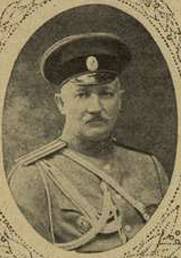
1. A.I. Westfalen.
3 July in the morning 9 A.I. Westfalen gave the order to the brigade, and the 14-th hussar of Mitava and 14-th Don Cossack ataman Efremov regiment opened at the turn of the forest, passing west of the villages of Lukovo and Konarzhevo Skouze.
As an eyewitness recalled, A.I. Westfalen, parting before the battle with the commander of the 14 Don Cossack Regiment A.A. Karneev, to the words of a Cossack colonel: “Well, goodbye. Maybe see you, ”replied, stretching out his hand to him:“ Certainly see you, but where? Here or there? ”And pointed to the sky.
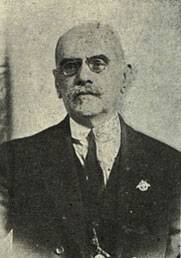
2. A. A. Karneev.
At about 11, the brigade went on the attack.
The commander of the hussar regiment, having crossed his regiment, pulled out the checker, commanding: “The regiment is behind me!”. The 1, 3 and 5 squadrons deployed in three lines, while the 4 and 6 squadrons under the command of Lieutenant Colonel A. A. Surazhevsky were deployed to Konarzewo Skese, maintaining contact with the Turkestan arrows, 2-th squadron of the staff captain Gurov, scattering in the avant-garde lava in front of the brigade front, directly attacked der. Neradovo.
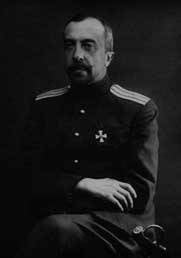
3. A. A. Surazhevsky.
The 14-th Don Cossack regiment, which operated to the left, also deployed its 5 hundreds into three lines. Like A.I. Westfalen, A.A. Karneev with the regimental headquarters was also in front of the first line of the regiment.
Supporting the attack, 23-i horse and 3-i foot batteries, located in the position of the village. Bjegendy, struck fire on the village. Neradovo and advanced chains of the enemy, but soon after having spent the available stock of shells, they fell silent.
Lieutenant Colonel A. A. Surazhevsky, commander of the hussar division, who ensured the deployment of the brigade, left an 2 machine gun in the Konarzewo Skuse under the guise of an 6 squadron squadron under the overall command of the captain of the Bronikovsky's 6 squadron. Colonel himself with 4-th squadron and 3-6 platoons on me-first, turning the shoulder of the left flank of the Don, gallop and moved in the direction of the village. Neradovo.
4. 14 th hussar Mitavsky regiment. Group photo. 1908
In front of the brigade, the lava of the 2 squadron was racing.
The attack took place in the rain, but despite the fact that there was a wide ditch across the field, the horses overcame it perfectly. The cavalrymen moved in silence, without shouting “Hurray,” as is required by the charter.
Horsemen came under fire from three light and heavy batteries of the Germans. But the Germans did not succeed in stopping the cavalry attack with artillery flame - the main part of the shells fell behind the brigade. Only once the 5-I hundred Donets was covered by German shells - and several horses without riders separated from it. The vakhmistr 3 of the hussar squadron, to ensign Dubrov, was torn off by a rupture of the projectile, and the hussar's horse poured with blood continued to rush to its place in the ranks of the squadron.
Despite the hurricane fire of the enemy's batteries, the deployment of the brigade took place as an inspection - in perfect order. The alignment, intervals, and distances were immaculate. The movement was accompanied by a great upsurge of morale, turned into sincere enthusiasm.
The Cossacks passed through the chain of the 7 of the Turkestan rifle regiment. Moreover, as soon as the left flank of the brigade was passing the rifle chain, the soldiers jumped out of the trenches and shouting: “Cavalry, help me out!” Ran after the cavalry, which, meanwhile, attacked the first line of the German infantry.
Having fallen under intense rifle and machine-gun fire of the Germans, the brigade began to suffer heavy losses. The 2 th Hussar squadron, the first to get into the German infantry chain, suffered the most. His gallant commander, captain-captain Gurov was killed by several bullets, wounded (when falling from a killed horse), Lieutenant Volkovitsky. But, having lost most of the personnel and left without officers, the squadron, now under the command of the squadron sergeant ensign Shapovalova, continued stabbing and slashing the Germans.
The squadrons of the main forces also destroyed the valiantly defending Germans - some of them abandoned weapon and raised her hands, but it never occurred to anyone to stop near the surrendered, disarm them and send them to the rear.
At precisely measured distances and intervals, carefully equalizing, they walked - on the right a hussar regiment, and on the left - a Cossack. Led by commanders and staffs.
Came under a surprise attack the German infantry to offer stubborn resistance - Marines spontaneously formed a small group of quads and led a furious fire, firing in all directions. But for the first cavalry waves run next, sweeping away everything that was encountered in their way, while ignoring both the trophies, and on their own losses. But, moving closer to the enemy, the cavalrymen suffered heavy losses under its fire - especially on the left flank and in the center.
The Germans fired from rifles and machine guns, from which the crew seriously thinned. Dozens of hussars and Cossacks fell off their horses, many of them without riders racing across the field.
Seeing that they could not stop the cavalry, the German artillerymen decided to retreat to the rear. Two batteries left, and their infantry cover ran after them.
The second wave of cavalry struck the left flank of the 229 and the right flank of the 230 of the infantry reserve regiments. Despite the very heavy losses, the 1 squadron of the Mitavians crossed the German lines between the internal flanks of the German regiments.
In the 2 line of the German trenches there was a courtyard with a high fence located on the outskirts of the village of Neradovo. The village took 3-defense battalion and a machine-gun platoon 229-th reserve infantry regiment under the command of Major Aylsbergera. The Germans concentrated in the village yard a group of machine guns - one of them was mounted on the roof of the house, two in the windows and one was in the barn.
2 machine guns under the command of Lieutenant Netter fired dagger fire, from which the cavalrymen suffered heavy losses. It was with this fire that the commander of the 2 squadron killed the staff captain Gurov, the ensigns Shapovalov and many hussars.
Colonel A. I. Westfalen with headquarters also rushed to this house. The Germans, having let the steps attacking the 50-70, opened fire immediately from all machine guns.
Struck by several bullets, A.I. Westfalen fell, and the squadrons, having broken into the village, chopped up a stubborn enemy.
Here brigade suffered the greatest losses: killed the commander of a squadron of 3-staff-captain Sonin, wounded commander 1-th squadron staff-captain spire. 5-commander of the squadron captain Vasiliev lost the horse, and squadron commander hurt in the fall, but kept running to the fence, because of which the Germans shot - and killed.
The Germans fired from the windows, because of buildings and fences.
The hussars who lost their horses continued to fight on foot. So, hussar 2-th squadron Savelov to see that the German machine gunner was a delay in the delivery of fire, he rushed to the gun and grabbed it by the barrel. The Russian hussar and the German infantryman began to fight, until the hussar managed to grab the German by the throat and strangle, taking possession of the enemy’s actual machine gun.
A division led by Lieutenant Colonel A. A. Surazhevsky, led by a Cossack left flank, also met with strong enemy fire, broke into the village of Neradovo. Wounded at the beginning of the attack, A. A. Surazhevsky carried the hussar along behind him and broke through to the main village street, where he was wounded again - now it is hard. The attack of the division distracted the attention of the enemy, which contributed to the seizure of the village.
The Germans did not stop the defense, defending themselves against hussars and Cossacks in separate houses, some of which were already burning.
The “queen of the fields” helped the cavalrymen to seize the village.
The Turkestan marksmen rushed after the hussars of A. A. Surazhevsky and captured Neradovo during a bayonet attack.
Most of the brigade, especially the 14 th Don Cossack regiment, less affected than hussars and partially mixed with hussars, broke through Neradovo. The attacking cavalry stumbled upon the reserves of the German infantry with numerous machine guns hidden in high bread. Two squadrons — hundreds — attacked the 1 Battalion of the Reserve Infantry Regiment, which was standing on the right side of the village, and jumped up to the south of the villages. Lenka, trying to attack the battery of the 229-mm guns located at the cemetery and parts of the 105-th reserve infantry regiment. But the deadly fire of the enemy squinted the bulk of the attackers. While trying to take on the enemy's battery, the lieutenant Genisht 231 was wounded and captured. The next day, a German general visited him in the infirmary, expressing his admiration and ordering him to return the St. George’s weapons to the officer (albeit later, when the captive lieutenant was sent to the rear, he was taken away again).
5. Cossack attacks.
By the time the village was taken, the 2 Brigade of the 14 Cavalry Division had lost almost half of its staff, all the staff officers, squadron and hundreds of commanders and most of the junior officers were knocked out.
The cavalrymen were stunned by the quick jumps, strong fire and the logging of living people - and instead of gathering around the still surviving officers who were trying to sort out the situation, they rushed farther by inertia. At the moment, the lack of a reserve was most acutely felt.
Thus, the remnants of the brigade continued to attack, moving to the west, where they stumbled upon the left flank of the enemy infantry, crowding the units of the 1 of the Turkestan Corps. Under the murderous fire of the German infantry, the hussars and Cossacks made their way, and at the village of Schwelice they reached the positions of the Turkestans. And here the cavalry helped their infantry. They struck in the back the advancing units of the German 86 Infantry Division, which, after heavy fighting, had just occupied the height of 119, which is located south of Najevo-Velki. Due to this unexpected strike, the German infantry was forced to retreat to the north, to the height of 128, leaving the villages of Nayevo-Velka and Nayevo-Tsyta. The rest of the brigade gathered at the forest, which was the initial line of attack.
To be continued
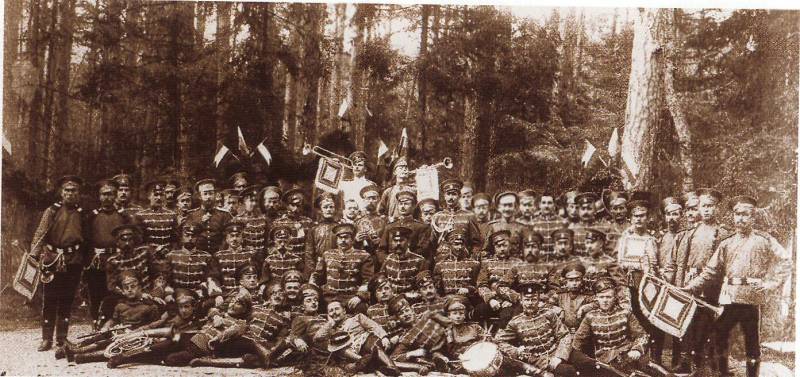
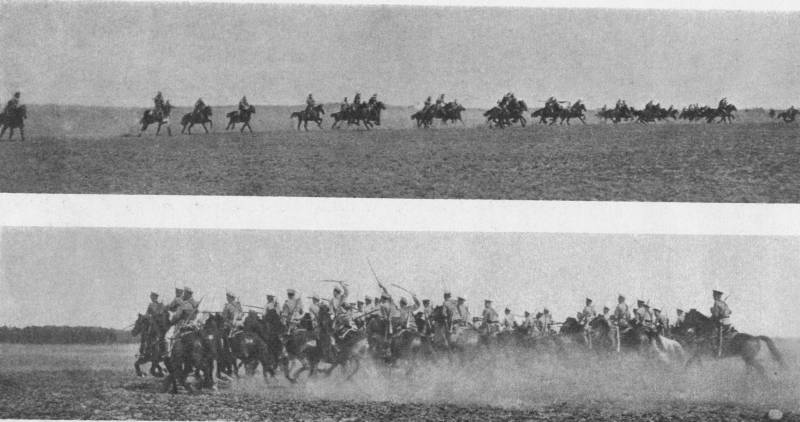
Information